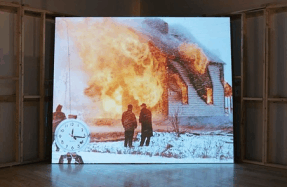A Feast for the Stewards of the Land: Contemporary Art and Netukulimk on Unama’ki
This past summer’s LandMarks2017/Repères2017, a nationwide public art program held in 20 national parks and historic sites across Canada as part of reflections on Canada 150, provides a rare opportunity to think about how contemporary art might engage with rural communities and wild places. Including projects by 12 artists, along with corresponding curricula at 16 universities across the country, LandMarks2017/Repères2017 sought to engage a broad public in exploring the meaning and use of Canada’s national parks and historic sites. While we might rely upon an image of these sites as wild places, separate from human activity, and often perceive their surrounding communities as being untouched by the contemporary, this is often far from the case. The creation of the parks system, and the concept of wilderness itself, as Kwantlen writer Robert Jago recently described in an article called “Take Back the Parks,” has involved the appropriation of lands from the Indigenous people who have long occupied these places, as well as the destruction of their livelihoods.1 While this is slowly changing, for a long time the parks system enforced a separation from the land for both Indigenous and non-Indigenous peoples, obscuring their own place within systems of survival and sustenance.
This past June, I travelled to Unama’ki, “the land of fog,” otherwise known as Cape Breton Island, to attend in the Cape Breton Highlands National Park. was the culminating performance of , a multi-faceted project by artist Ursula Johnson. was a process that began during a Banff residency when Johnson created a foliage pattern textile representing the present-day ecologies of the Highlands. She then used this pattern to structure a series of conversations with sixth-, seventh- and eighth-grade students from Cabot Junior-Senior High School in Neil’s Harbour, who live in the communities near the park. The students, many of them from Acadian and Scottish families whose ancestors had settled there following the expulsion of the Acadians.
You’re reading a preview, subscribe to read more.
Start your free 30 days





